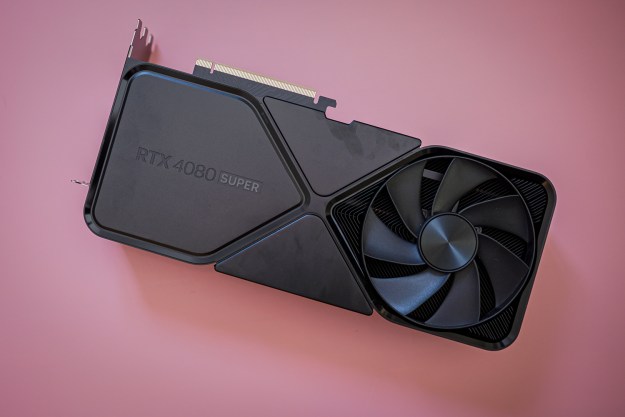It was already rumored that Nvidia is working on a desktop variant of its GeForce RTX 3050 graphics card. According to a new leak, however, the company is preparing to launch the GPU with two models.
Leaker Kopite7kimi (spotted by VideoCardz) disclosed that Nvidia is reportedly opting to integrate the GA106 GPU for the RTX 3050 desktop lineup (4GB and 8GB configurations) as opposed to the GA107 GPU that was originally reported.

Initial rumors detailing the card’s specifications indicated 3,072 CUDA cores. According to Kopite7kimi, that configuration has been downgraded by Nvidia. The GA106-150 GPU will now feature 2,560 CUDA cores alongside 8GB of memory, while the GA106-140 GPU that sports 2,304 CUDA cores comes with 4GB of memory.
It’s unclear why Nvidia chose to change the GPU architecture, but VideoCardz notes the decision could be associated with plans to potentially release an RTX 3050 Ti desktop variant that offers more cores, as well as the same GPU.
As for the GA106 GPU itself, it’s based on Nvidia’s Ampere architecture. With support for DirectX 12 Ultimate, the chip is capable of both hardware ray tracing and variable-rate shading, which are features largely used for video games. It’s also compatible with machine-learning applications through the use of 120 tensor cores.
Currently, the GeForce RTX 3050 graphics card is found on laptops. The card’s desktop series, meanwhile, seems to be Nvidia’s answer to Intel’s upcoming Arc Alchemist lineup, as well as AMD’s RDNA 2-based Navi 24 GPUs. The first video cards from these two series produced by Team Blue and Team Red are expected to be released during the first quarter of 2022.
With this in mind, the RTX 3050 desktop GPUs are most likely set for an unveiling at CES 2022 on January 4, followed by an official release a few weeks later at the end of the month. Of course, this is not the only graphics card Nvidia plans to release during the coming months. Its flagship GeForce RTX 3090 Ti is also due for a January launch, while the RTX 3080 12GB model could go head-to-head with Arc Alchemist’s high-end segment in the second quarter.
Component shortages, however, could cause one particular GPU, the rumored GeForce RTX 3070 Ti 16GB, to miss its January launch.
Editors' Recommendations
- Nvidia could flip the script on the RTX 5090
- Nvidia RTX 50-series graphics cards: news, release date, price, and more
- Nvidia just made GeForce Now so much better
- Why I’m feeling hopeful about Nvidia’s RTX 50-series GPUs
- Nvidia just fixed a major issue with its GPUs




